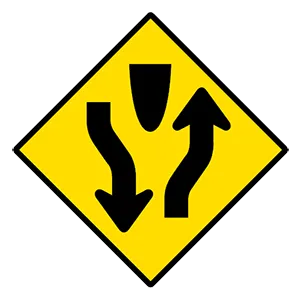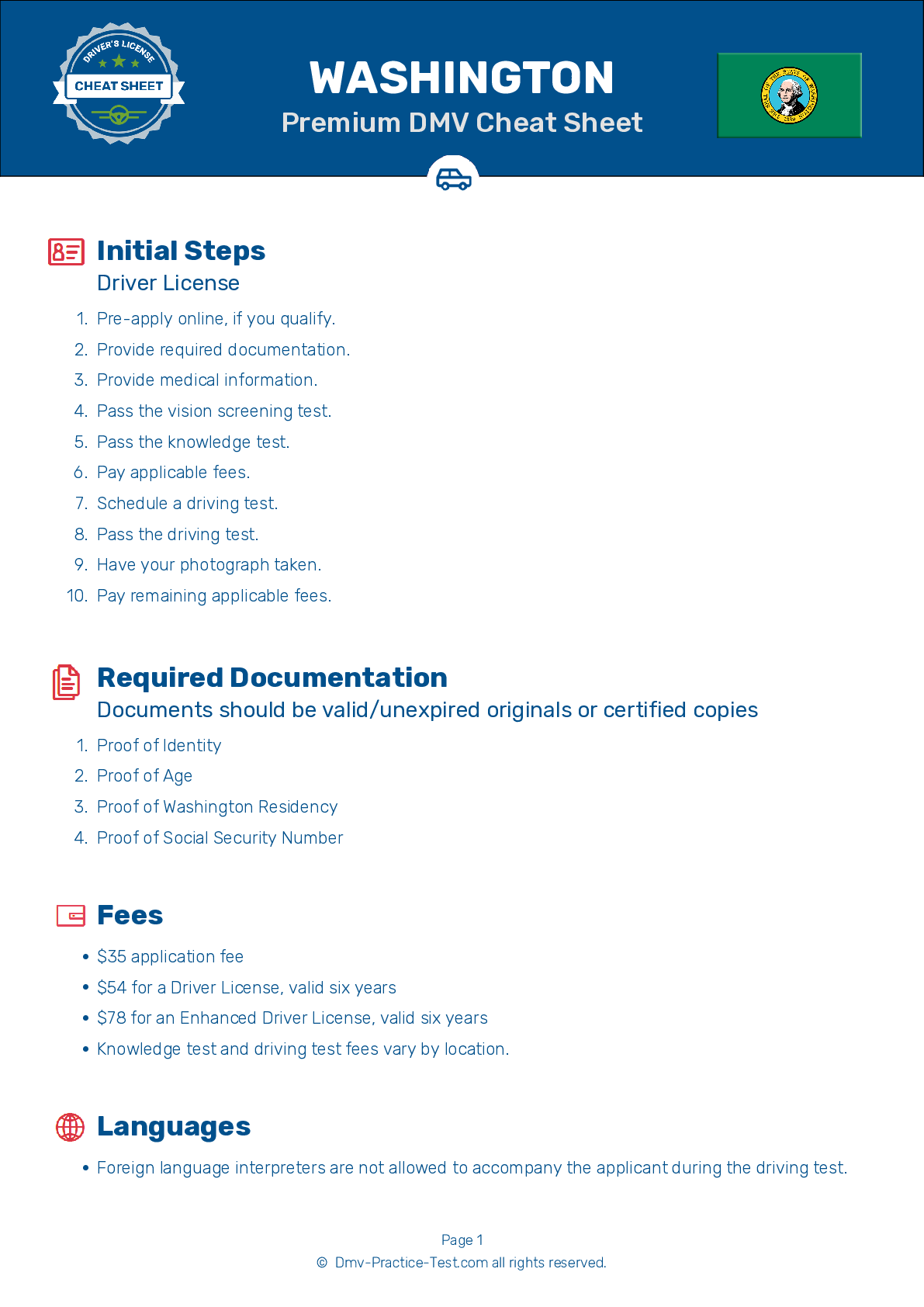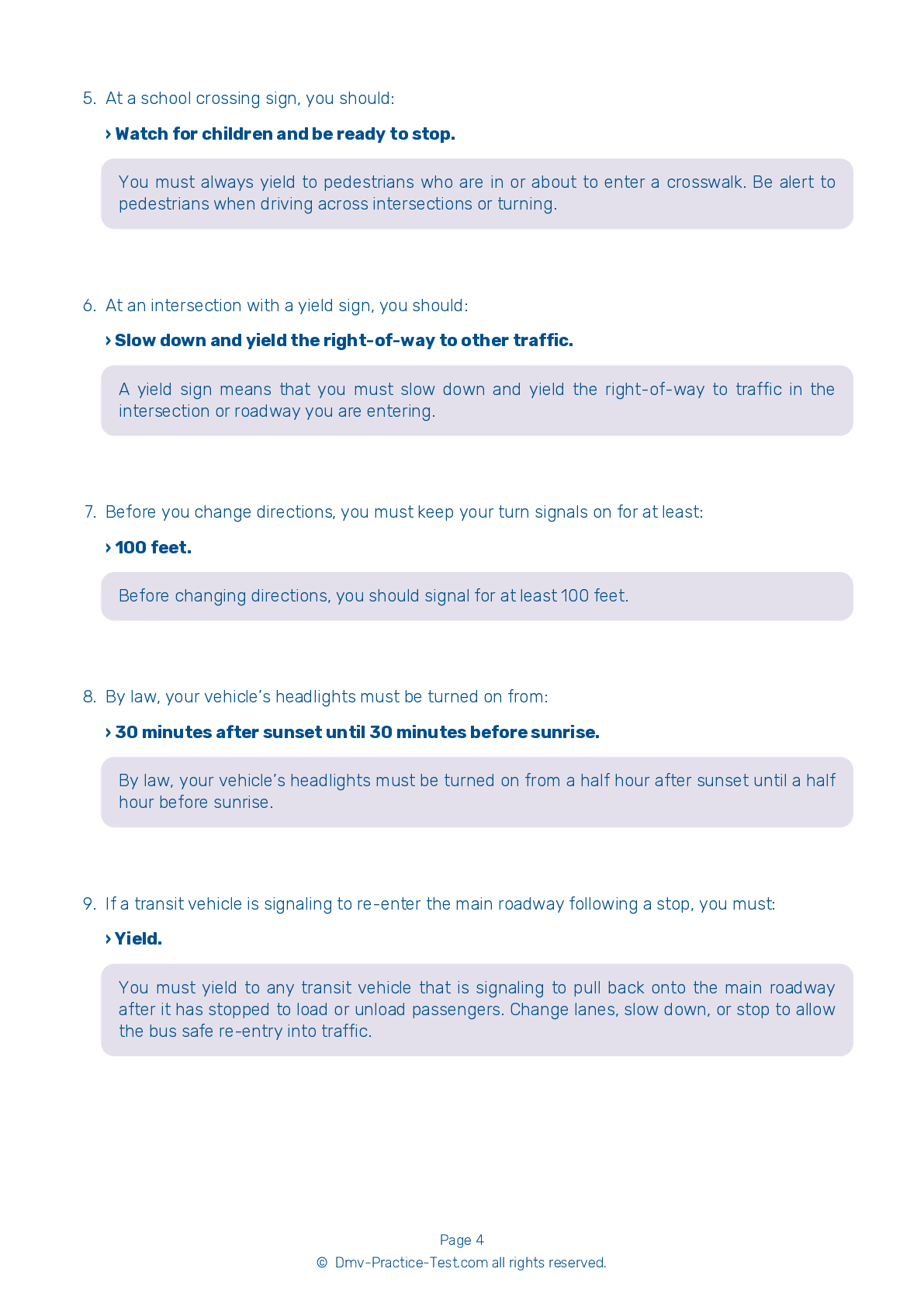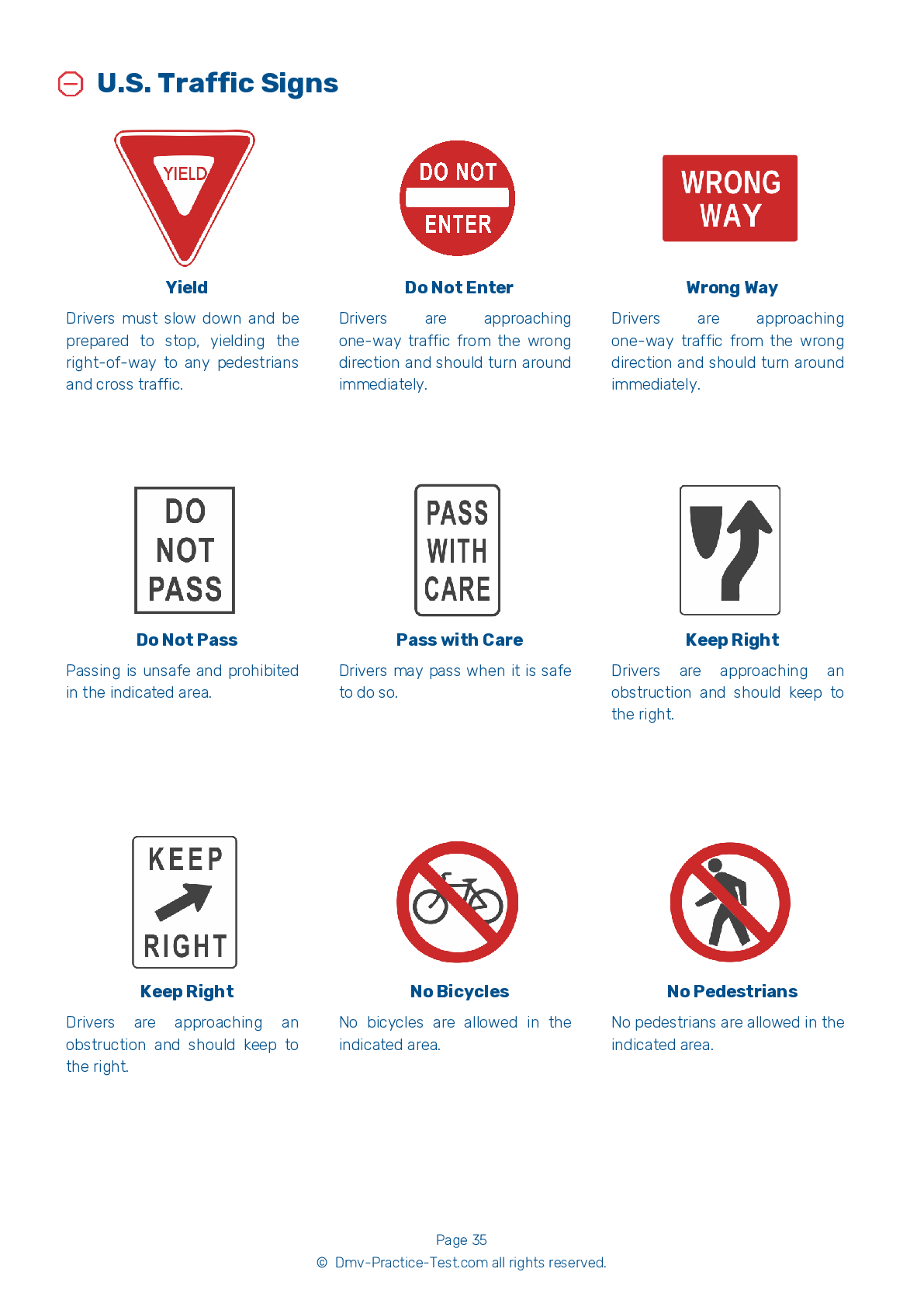FREE Washington DMV Practice Test #7 Page 4 of 4
The Washington DMV practise examinations have been updated for January 2025. It includes questions based on the Washington Driver Handbook's most significant traffic signals and legislation for 2025. Use actual questions that are very similar (often identical!) to the DMV driving permit test and driver's licence exam to study for the DMV driving permit test and driver's licence exam.
On the practise exam, each question gets a tip and explanation to help you remember the concepts. The written component of the official Washington DMV test will feature questions about traffic rules, traffic signs, and driving statutes, as well as knowledge from the Driver Handbook.
To obtain a passing grade, you must correctly answer 20 of the 25 questions. Use the practise exam provided by the Washington Department of Motor Vehicles to help you prepare for your instruction permit or driver's licence.
The DMV exam is available in several languages.
Using any kind of testing assistance will result in an automatic fail, and the DMV may take additional action against your driver's licence, so stay away from it.
19 . You come to an intersection that is blocked by other traffic. You should:
You cannot enter an intersection if traffic is backed up on the other side and you cannot get completely through the intersection. Wait until traffic ahead clears so you do not block the intersection.
20 . If it causes an injury, a death, or $1,000 or more in damage to any one person’s property, you must report an accident to law enforcement officials within ____ of the accident.
If a collision results in an injury, a death, or $1,000 or more in damage to any one person’s property and a report is not made by a law enforcement officer, you must complete a Collision Report form within four days of the accident.
21 . Is it legal cross a double solid yellow centerline to pass?
Two solid yellow lines down the center of a two-way road mean that neither lane of traffic may cross the lines, unless they are turning off of the roadway. A driver can cross double yellow lines when turning into or out of a driveway or entrance to a business. No passing is allowed over a solid yellow line.
22 . What may help drivers conserve gasoline?
Every time you have to stop quickly, it takes time and fuel to accelerate and get your vehicle back up to the speed of traffic. Drivers who look far ahead of their vehicles can slow down gradually or change lanes to avoid unnecessary braking, leading to better gas mileage.
23 . To make a left turn when the traffic light is green, you should:
At a green light, oncoming traffic has the right-of-way. Unless a posted sign prohibits it, you may turn left, but only when it is safe to do so.
24 . This road sign means:

This sign indicates that a divided highway begins ahead. The road will split into two one-way roadways separated by a median or divider. You must keep to the right.
25 . A solid white line down the center of a two-lane road indicates:
White lines are used to separate traffic moving in the same direction. Solid lines indicate that drivers are not permitted to pass.
Need Car Insurance? No problem!
Compare the best rates in Washington and find a personalized policy that meets your needs.
1. Are You Currently insured ?
2. Married ?
3. Do you own your Home?
4. Do you have more than 1 car ?
5. Have you or a Family Member Honorably Served in U.S. Military ?
6. Your Name
7. Age
8. Zip code
IMPORTANT REMINDER:Auto Insurance is Mandatory to drive in Washington. Get covered before you hit the road to avoid any fines.
Ranked by best match
2025 Washington | Frequently Asked Questions
1. Complete a driver education course if you're under 15 ½.
2. Visit a driver licensing office.
3. Provide proof of identity, Social Security number, and residence.
4. Pass the knowledge test.
5. Pay the required fee.
6. If you're under 18, a parent or guardian must sign the application.
Remember, with a permit, you must always have an adult 21 years or older in the car with you.
1. Not checking mirrors and blind spots.
2. Incorrect signaling or forgetting to signal.
3. Lack of steering control.
4. Improper lane positioning and changing.
5. Not following traffic signs or signals.
6. Inadequate observation at intersections.
7. Speeding or driving too slowly.
8. Failing to yield the right of way where necessary.
Remember, practice is key to overcoming these errors.



